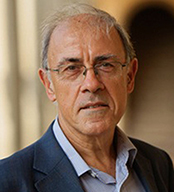Scott P. Burger, Jesse D. Jenkins, Carlos Batlle, Ignacio Pérez-Arriaga

The emergence of distributed energy resources (DERs) , digital technologies, and innovations in power electronics and network technologies are creating new options for the delivery of electricity services and the potential for more affordable and resilient power systems. However, these developments are also placing new strains on electric power industry structures that were established in a time of static distribution networks and relatively inelastic demand. DERs and digital technologies dramatically expand the number of potential investors in and operators of power system infrastructure, challenging traditional means of planning and coordinating the construction of generation, storage, and network assets. Distribution-connected resources have historically not participated in traditional means of executing least cost, security-constrained dispatch of generation and typically face regulated tariffs as opposed to market-determined prices. Thus, the emergence of DERs is challenging the structures historically used to coordinate investments in power system infrastructure and to coordinate supply and demand to ensure reliable operations of power systems in real time.
During the restructuring that swept through the electricity industry in the 1980s, 1990s, and 2000s, regulators grappled with a set of questions over how to assign the roles of transmission system ownership and operation, generation ownership, market operation, and retailing to power system actors in order to ensure the development of an affordable mix of network and generation assets.
Today, the emergence of DERs has spurred regulators to engage in analogous debates over which actors should perform which roles within the distribution system. Regulators are interested in ensuring the efficient utilization of and investment in both DERs and the system’s conventional suite of network, generation, demand, and storage resources. In addition, regulators are interested in maintaining or enhancing competition in the horizontal segments of the power sector (e.g., generation and retailing) where it exists, while potentially fostering more competitive provision of “non-wires” or operational alternatives to investment in conventional network assets.
Existing industry structures do not adequately achieve these goals, prompting a need to revisit the challenge of industry structure once again. In power systems where actors remain vertically integrated across generation, transmission, distribution, and retail, coordinating system investments and operations requires a set of internal planning and operating decisions and appropriate price signals, incentives, and/or communications with electricity users. In systems with competition in generation and/or retail, this coordination requires multilateral arrangements between monopoly network providers and market actors and market-facilitated price signals and contracts for energy, capacity, and ancillary services. In light of the decentralization of the power sector, regulators and policy makers must carefully consider how distribution industry structure impacts the ability of power sector stakeholders actors to efficiently plan, coordinate, and operate distribution networks and connected devices.
To facilitate this critical task, this paper defines and reviews the core activities and economic characteristics of six key industry roles: distribution network ownership (DNO); distribution system operation (DSO); DER ownership; distribution-level markets; aggregation of demand and DERs; and data management. We assess the implications of different structures for competition in DER ownership and aggregation. We analyze the arrangements needed to coordinate actions between distribution network owners and operators, DER owners, electricity consumers, and any aggregators serving these consumers. Our analysis focuses primarily on whether a given structure is likely to lead to the least-cost mix of network and generation resources in the short and the long run.
This paper addresses five questions that are currently being debated by regulators and policy makers globally.
- Should distribution system operations be separated from distribution network ownership in order to ensure the neutrality of the DSO role?
- Should DNOs be allowed to own and operate DERs, or should DER ownership be left exclusively to competitive actors?
- Does the emergence of DERs necessitate a reconsideration of the role of competition in the provision of aggregation services such as retailing ?
- What is the role of the distribution system operator (DSO) – independent or otherwise – in future power system operations?
- What, if any, market mechanisms might be needed under different institutional arrangements to coordinate efficient investment and operational decisions across various actors?
We find that separating distribution system operations and network ownership would likely result in a decrease in system efficiency relative to a system in which the DNO and DSO are a single entity. However, a combined DNO and DSO must be sufficiently separated from any competitive activities, given the increasingly central role that DSOs will play in system planning and operation. We note that price signals at the distribution level play a new role in coordinating investment in and operation of DERs. As a result, these signals must be dramatically improved to ensure that DERs improve the power system as a whole, rather than for any one network user at the expense of others. This will require significant improvements in electricity tariff design, as well as the creation of new market mechanisms such as auctions for procuring non-wires alternatives.
References
Burger S. P., J. D. Jenkins, C. Batlle, and I. Pérez-Arriaga, 2018, “Restructuring Revisited: Competition and Coordination in Electricity Distribution Systems.” MIT CEEPR Working Paper 2018-007.
Further Reading: CEEPR WP 2018-007






